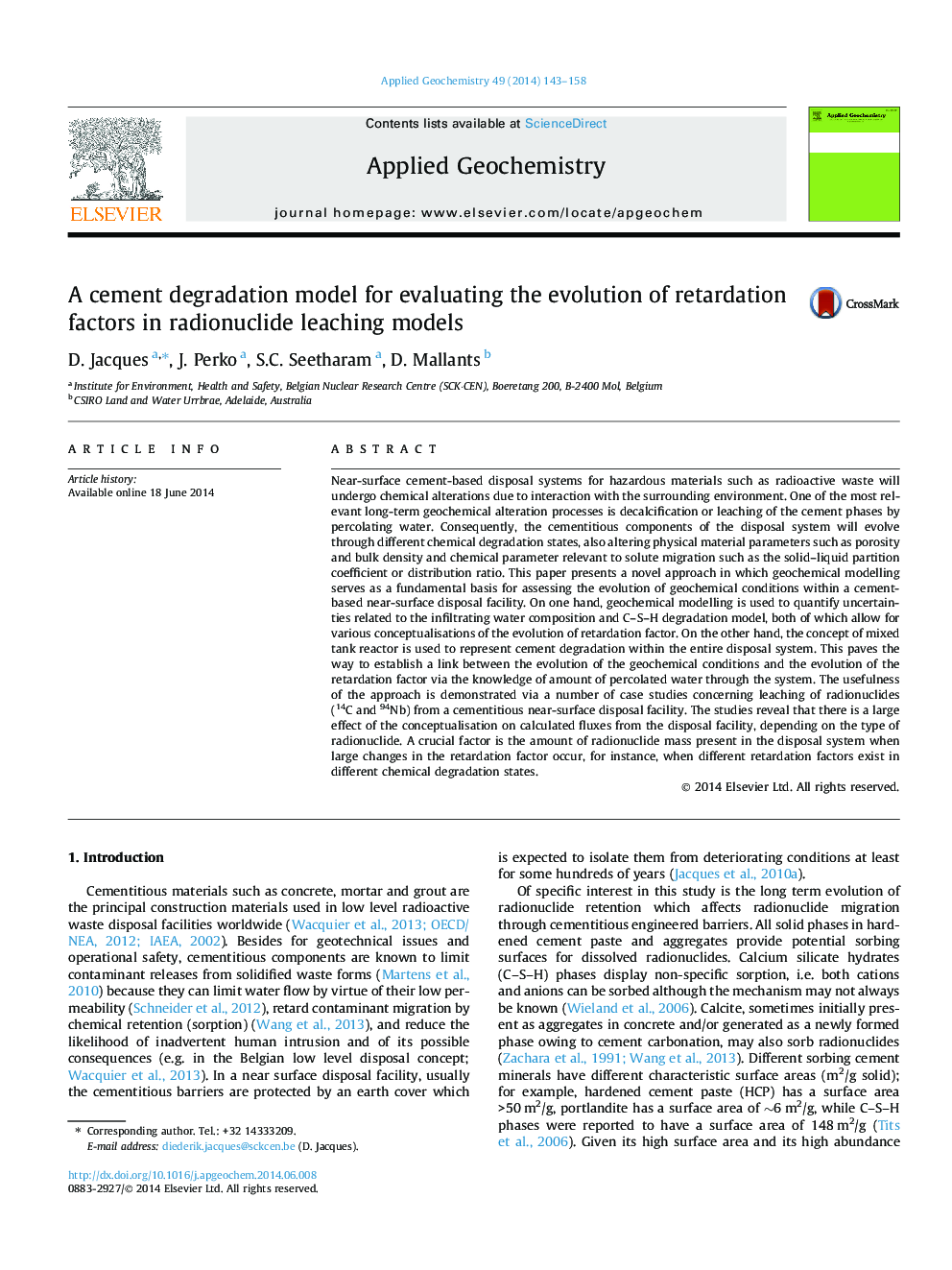| کد مقاله | کد نشریه | سال انتشار | مقاله انگلیسی | نسخه تمام متن |
|---|---|---|---|---|
| 4435769 | 1620242 | 2014 | 16 صفحه PDF | دانلود رایگان |
• Radionuclide retardation and physical parameters evolve during concrete leaching.
• C–S–H dissolution model uncertainty is assessed using an ensemble approach.
• A mixed-tank reactor model simplifies the chemical evolution of a disposal system.
• Evolution of retardation factors is included in the radionuclide leaching model.
Near-surface cement-based disposal systems for hazardous materials such as radioactive waste will undergo chemical alterations due to interaction with the surrounding environment. One of the most relevant long-term geochemical alteration processes is decalcification or leaching of the cement phases by percolating water. Consequently, the cementitious components of the disposal system will evolve through different chemical degradation states, also altering physical material parameters such as porosity and bulk density and chemical parameter relevant to solute migration such as the solid–liquid partition coefficient or distribution ratio. This paper presents a novel approach in which geochemical modelling serves as a fundamental basis for assessing the evolution of geochemical conditions within a cement-based near-surface disposal facility. On one hand, geochemical modelling is used to quantify uncertainties related to the infiltrating water composition and C–S–H degradation model, both of which allow for various conceptualisations of the evolution of retardation factor. On the other hand, the concept of mixed tank reactor is used to represent cement degradation within the entire disposal system. This paves the way to establish a link between the evolution of the geochemical conditions and the evolution of the retardation factor via the knowledge of amount of percolated water through the system. The usefulness of the approach is demonstrated via a number of case studies concerning leaching of radionuclides (14C and 94Nb) from a cementitious near-surface disposal facility. The studies reveal that there is a large effect of the conceptualisation on calculated fluxes from the disposal facility, depending on the type of radionuclide. A crucial factor is the amount of radionuclide mass present in the disposal system when large changes in the retardation factor occur, for instance, when different retardation factors exist in different chemical degradation states.
Journal: Applied Geochemistry - Volume 49, October 2014, Pages 143–158
